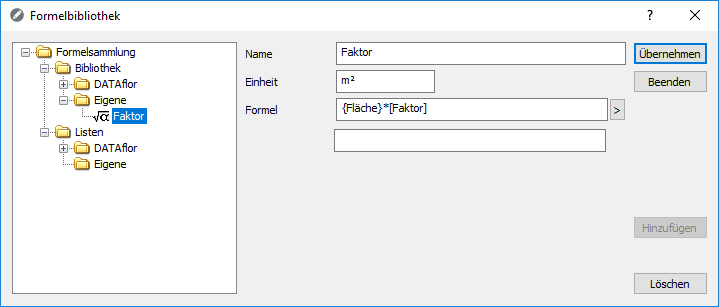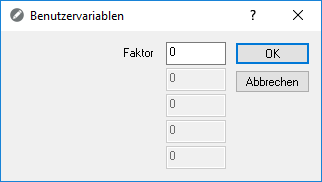Table of Contents
Add attribute
Applying formulas
Formulas are like that too Quick-Masses, a universal tool. The results can be, for example, cost calculations (area x variable costs per m2 = result in EUR) or evaluations (area x variable evaluation in points = total number of points).
Generated formulas are saved across all programs and are therefore immediately available in all other drawings. The application, selection and administration of the formulas is done in one and the same window, which is via [Add] > Formula is opened.
Assign an existing formula
If a formula is assigned to a group, this formula is added to each subordinate object. However, the formula can only be used at the assigned group level change.
Create your own formulas
In the actual formula dialog, formula libraries and lists are shown in the tree on the left. Under the folder DATAflor Predefined formulas are already stored that cannot be changed. Formulas from older program versions are automatically saved in the folder Old formula collection filed. over [Add] You can create your own libraries, formulas and lists.
- Click the tab Features on [Add] > Formulas .
- Select the group under which a new formula should be created, e.g. own (not with group DATAflor).
- click on [Add].
- Enter a name (e.g. area with solid excavation) and a unit (e.g. t).
- Now the definition of the formula follows. In this case an object property {area} is required, since the excavation depends on the area size. With the button [>] and selection Object Property> Area the value is inserted into the formula.
- Further inputs can now be +, -, *, / and numbers as arithmetic parameters, e.g. 2.5. It is more suitable to work with variableswho are also with [>] inserted. The variable can be referred to as [layer thickness]. This has the advantage that each time the formula is used, a layer thickness that is individually applicable to the object can be determined.

- The last thing you can do is to use a List can be accessed, e.g. [! conversion weights m3 / t!]. A list is a collection of predefined values that can serve as a knowledge base.
- When the formula is then used, the variable and a value from the list are queried.
Lists
Lists are used in the formula library as a knowledge database and for storing frequently required values.
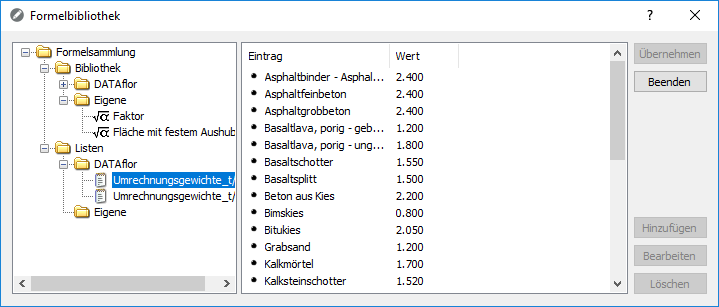
Created lists can simply be entered with [To edit] can be edited. The system already contains two standard lists that deal with the conversion of areas and distances into weight.
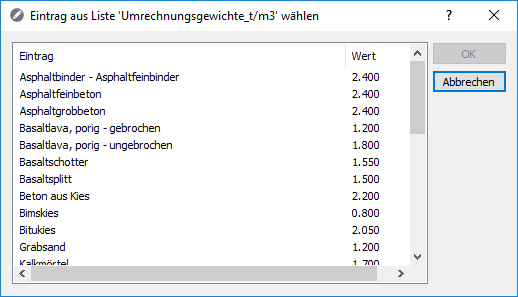
Change a formula
Go to the Change formulas that have already been defined, the corresponding entry is marked in the tree on the left. The right side shows the details, which can be easily edited.
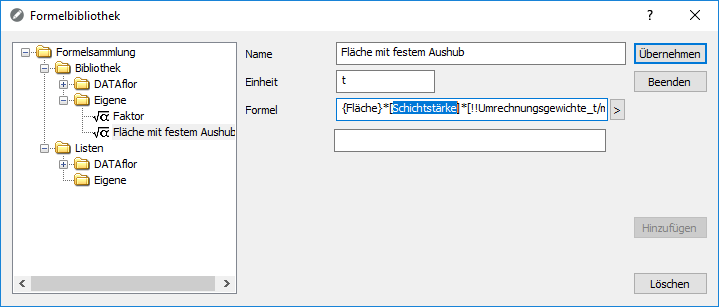
Editing is ended by selecting another formula in the tree or using the formula with [Take over].
Changes only affect newly assigned formulas. Already in Quick-Masses The formulas used are not overwritten by the new property.
If a variable or the selection of a list entry is to be changed after adding the formula, mark the corresponding attribute in the tab Features and open the formula using the plus symbol. The entries for the variables and lists now appear below this. Enter the new value for the variable here or select the new entry from the list using the arrow.
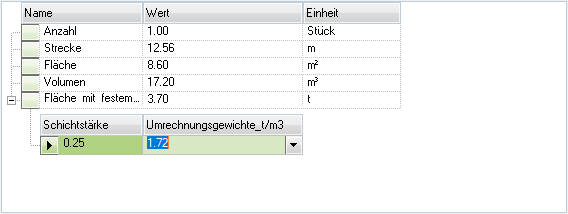
Once created, formulas can also be deleted and revised. The revision only relates to a new use of the formula. Drawings in which the formula was applied in the previous state are not changed.

